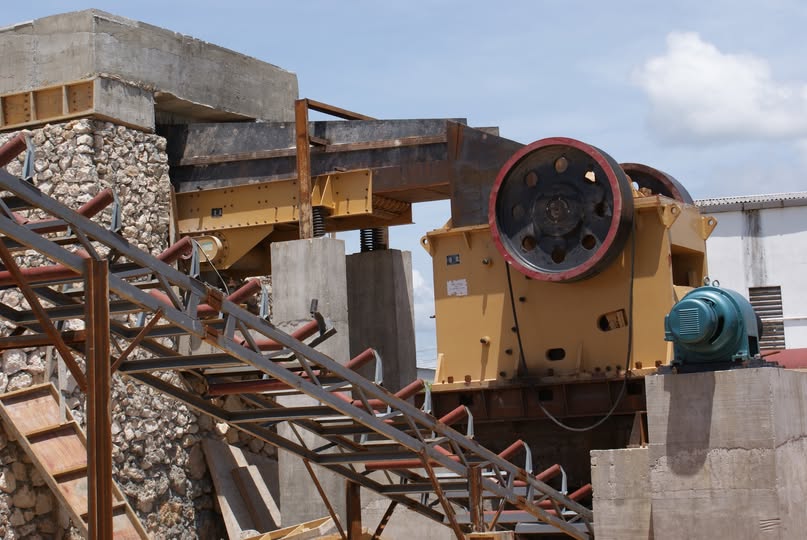Common Material Blockage Issues in Vibratory Feeders: Causes, Solutions, and Prevention Tips
Vibratory feeders are critical components in bulk material handling systems, widely used in industries like mining, food processing, and manufacturing. However, material blockage—or “卡料” (kā liào)—is a frequent challenge that disrupts workflow and reduces efficiency. This article explores the common causes of vibratory feeder blockages, actionable solutions, and best practices for prevention, optimized for SEO to help users quickly find reliable answers.

Why Do Material Blockages Occur in Vibratory Feeders?
Understanding the root causes of blockages is key to resolving them. Below are the most common culprits:
- Material Characteristics
- Moisture Content: Wet or sticky materials (e.g., clay, sugar) tend to clump, adhering to feeder surfaces.
- Particle Size Irregularities: Oversized or irregularly shaped particles can jam the feeder’s flow path.
- Low Material Density: Lightweight particles may fail to respond adequately to vibrations, causing uneven distribution.
- Equipment Design Flaws
- Incorrect Trough Geometry: A poorly designed trough (too narrow, steep, or smooth) disrupts material flow.
- Suboptimal Vibration Settings: Incorrect amplitude or frequency reduces the feeder’s ability to move materials efficiently.
- Operational Errors
- Overloading: Exceeding the feeder’s capacity leads to congestion.
- Inconsistent Feed Rates: Sudden surges in material volume overwhelm the system.
- Environmental Factors
- Dust Accumulation: Fine particles can build up in mechanical components, hindering vibrations.
- Temperature Extremes: Thermal expansion/contraction alters equipment dimensions, creating friction points.
Proven Solutions to Resolve Blockages
Addressing blockage issues requires a mix of corrective actions and preventive measures:
1. Optimize Material Properties
- Dry moisture-sensitive materials before feeding.
- Use additives (e.g., anti-caking agents) for sticky substances.
- Screen materials to remove oversized particles.
2. Adjust Equipment Parameters
- Calibrate Vibration Settings: Increase amplitude/frequency for heavier materials; reduce for lighter ones.
- Modify Trough Design: Install liners (e.g., polyurethane) to reduce friction, or adjust the slope for smoother flow.
3. Implement Maintenance Routines
- Clean the feeder regularly to prevent dust buildup.
- Inspect springs, drives, and bearings for wear and tear.
- Lubricate moving parts as per manufacturer guidelines.
4. Upgrade Technology
- Install sensors to monitor material flow and trigger alerts for irregularities.
- Use variable frequency drives (VFDs) to dynamically adjust vibration intensity.
Preventing Blockages: Best Practices
Proactive strategies minimize downtime and extend equipment life:
- Conduct Material Testing: Analyze material properties (size, density, moisture) before selecting a feeder.
- Train Operators: Ensure staff understand load limits, vibration settings, and troubleshooting steps.
- Schedule Predictive Maintenance: Use IoT-enabled tools to detect early signs of wear or misalignment.
- Choose High-Quality Feeders: Invest in robust, corrosion-resistant models designed for your industry’s needs.
Conclusion
Material blockages in vibratory feeders are preventable with the right knowledge and tools. By addressing material properties, optimizing equipment settings, and prioritizing maintenance, businesses can ensure smooth operations and maximize productivity. For persistent issues, consult a vibratory feeder specialist to tailor solutions to your unique workflow.
- > Ball Mill for Gold Mining and Granite Processing
- > Comprehensive Guide to Choosing the Right Jaw Crusher Model
- > Hydraulic Cone Crusher in South Africa: Optimizing Performance for Mining and Construction
- > Mobile Jaw Crusher for Copper Ore Processing in Ukraine: Enhancing Efficiency and Flexibility
- > Impact Crusher: The Best Equipment for Efficient Concrete Recycling
- > The Role of Vibrating Screens in Iron Ore Washing: Enhancing Efficiency in Ore Processing
- > The Role of Vibrating Screens in Iron Ore Processing Plants
- > Advantages of Using Impact Crushers in the Mining Industry
Hot Product


Online




Message
